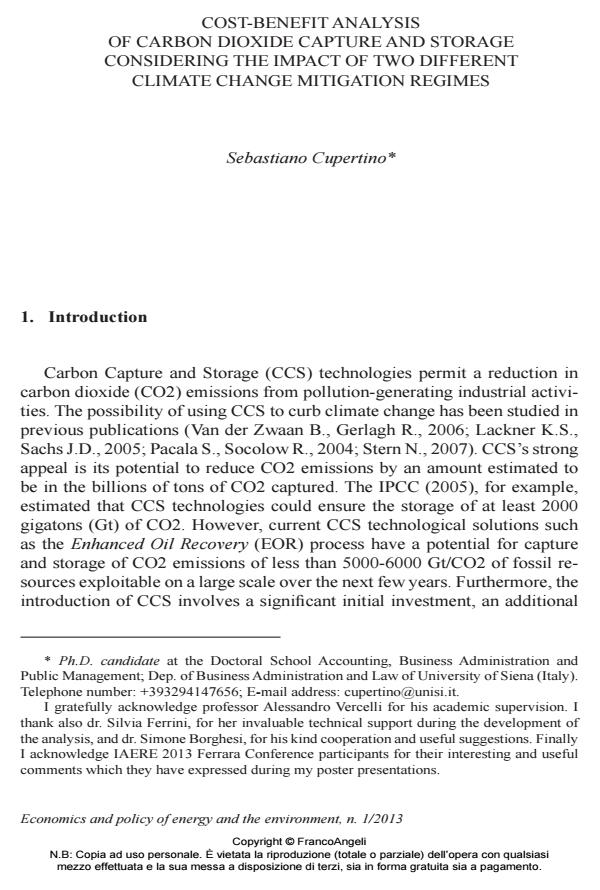Cost-benefit analysis of carbon dioxide capture and storage considering the impact of two different climate change mitigation regimes
Titolo Rivista ECONOMICS AND POLICY OF ENERGY AND THE ENVIRONMENT
Autori/Curatori Sebastiano Cupertino
Anno di pubblicazione 2013 Fascicolo 2013/1
Lingua Inglese Numero pagine 17 P. 73-89 Dimensione file 485 KB
DOI 10.3280/EFE2013-001005
Il DOI è il codice a barre della proprietà intellettuale: per saperne di più
clicca qui
Qui sotto puoi vedere in anteprima la prima pagina di questo articolo.
Se questo articolo ti interessa, lo puoi acquistare (e scaricare in formato pdf) seguendo le facili indicazioni per acquistare il download credit. Acquista Download Credits per scaricare questo Articolo in formato PDF

FrancoAngeli è membro della Publishers International Linking Association, Inc (PILA)associazione indipendente e non profit per facilitare (attraverso i servizi tecnologici implementati da CrossRef.org) l’accesso degli studiosi ai contenuti digitali nelle pubblicazioni professionali e scientifiche
This study examines a typical decision-making process aimed at assessing the merits of constructing a new coal-fired power plant with three possible investment options: two with different Carbon Dioxide Capture and Storage (CCS) plants and one without. A Costs-Benefits Analysis (CBA) is carried out considering that the industrial investment may be affected by two alternative climate change mitigation regimes. The results show the impact of specific climate change mitigation regimes on the balance between the financial value and the socio-economic implications of investment in a CCS oxy-combustion or post-combustion plant. Therefore, this study aims to define which CCS plant option is the optimal investment choice that could be considered a financial and socio-economically sustainable climate change strategy.
Parole chiave:Carbon Capture and Storage technology, climate change, Costs-Benefits Analysis, oxy-combustion/post-combustion plant
Jel codes:Q51, Q54, Q55, Q58
Sebastiano Cupertino, Cost-benefit analysis of carbon dioxide capture and storage considering the impact of two different climate change mitigation regimes in "ECONOMICS AND POLICY OF ENERGY AND THE ENVIRONMENT" 1/2013, pp 73-89, DOI: 10.3280/EFE2013-001005